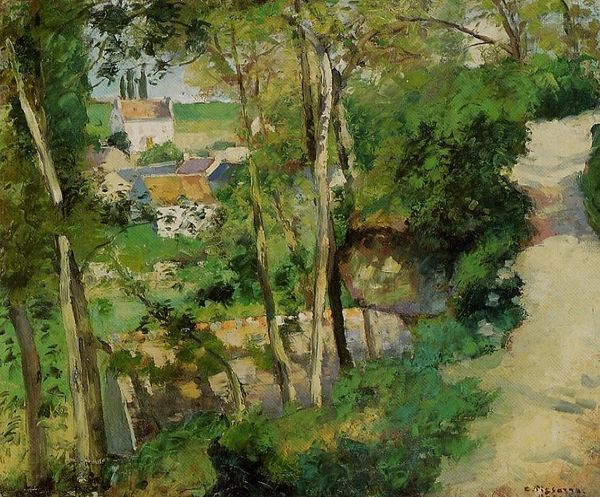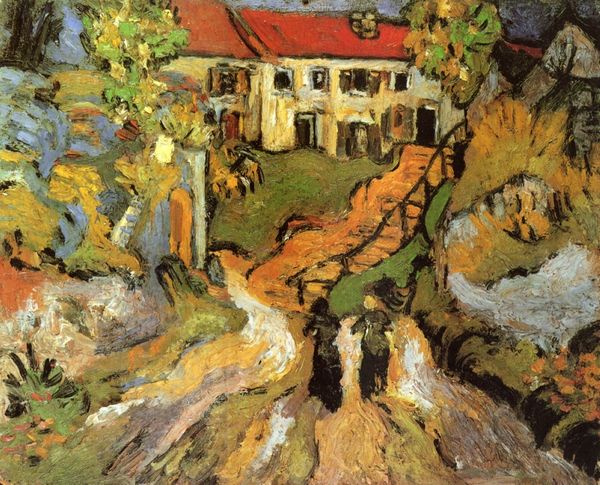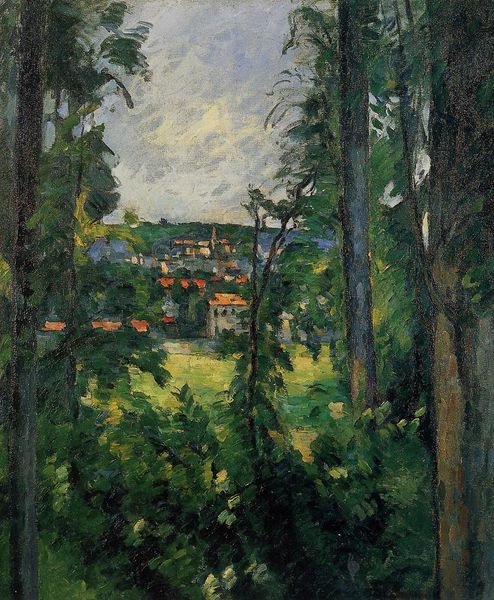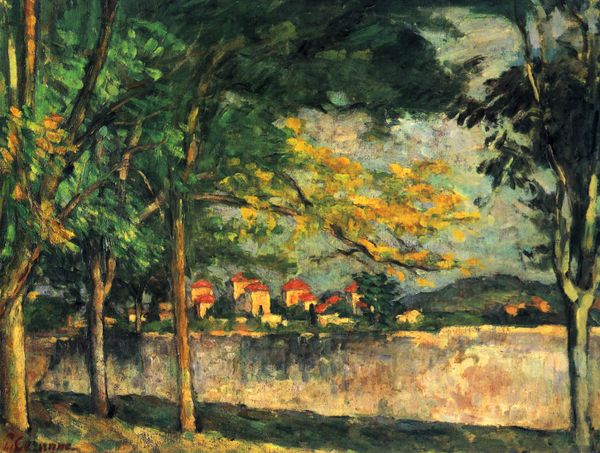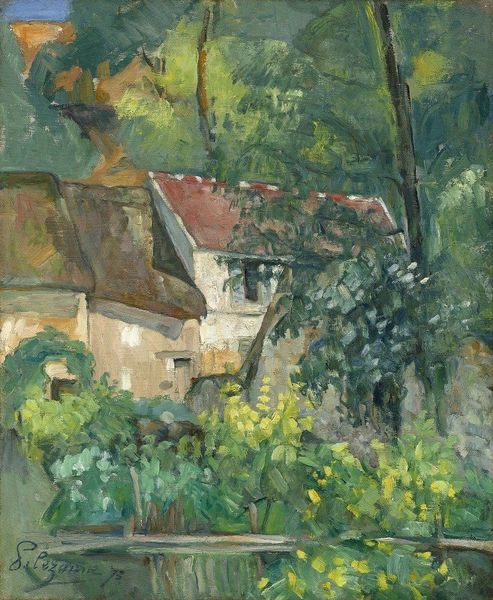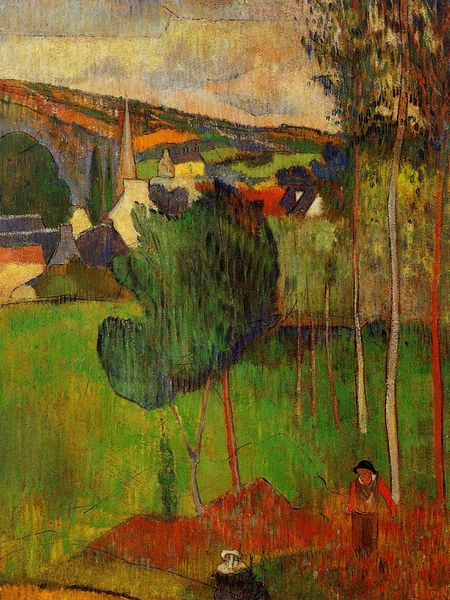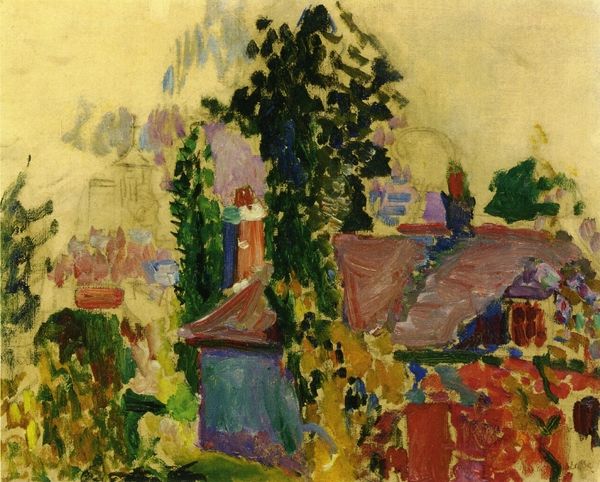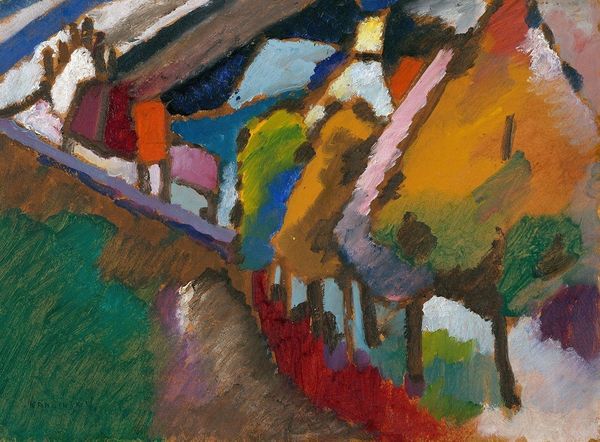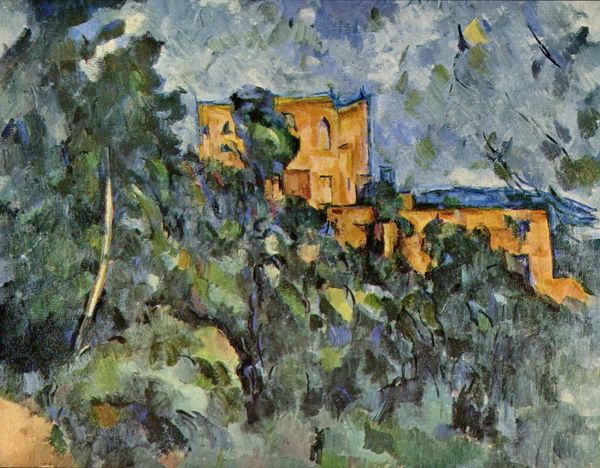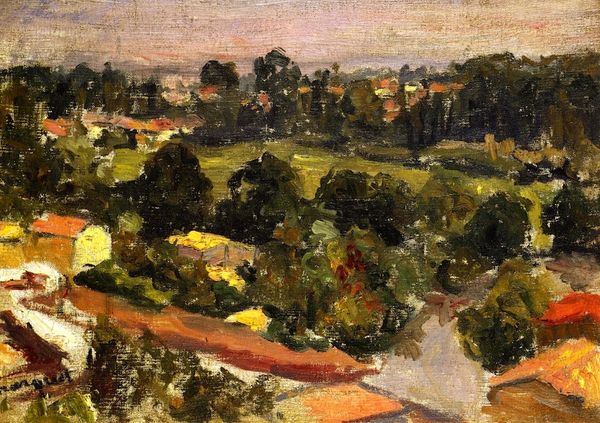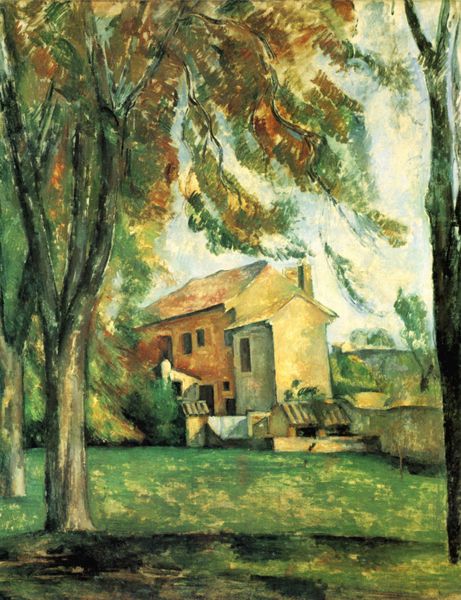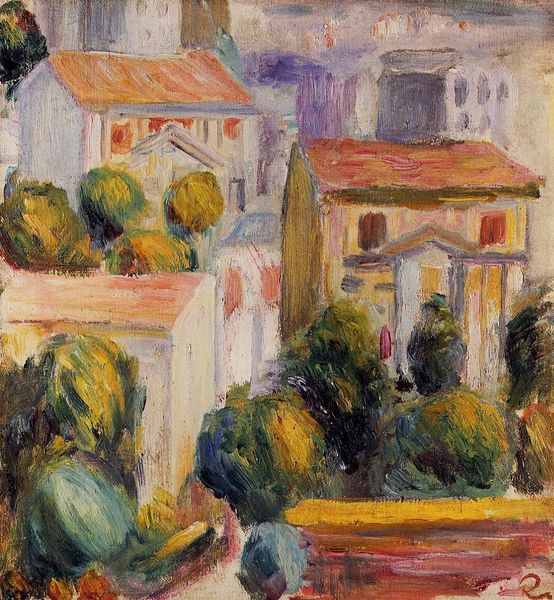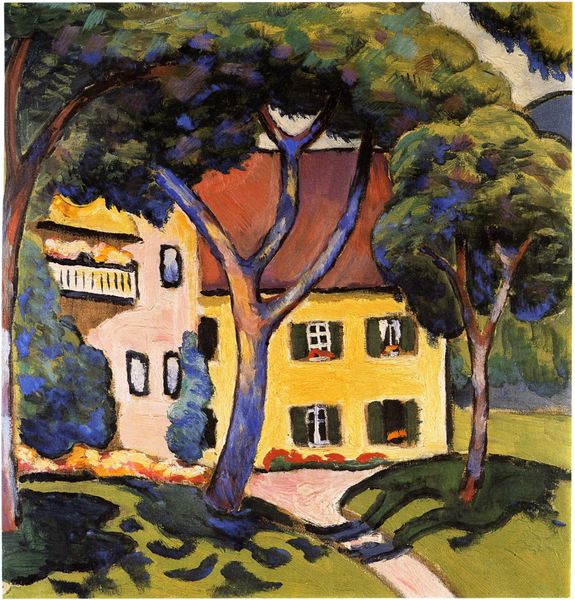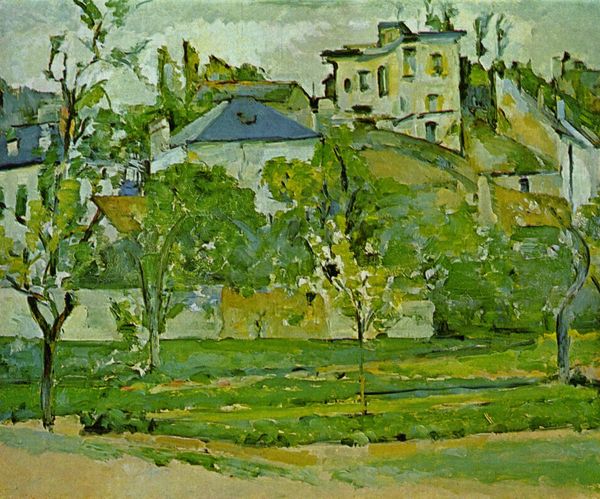
Copyright: Public domain
Editor: So, this is Cézanne's "Etude - Paysage a Auvers" from 1873, an oil painting done en plein-air. There's something almost naive about it, yet so grounded. The colors feel both muted and intense. I'm curious, what grabs you when you look at it? Curator: It's a deceptive painting, isn’t it? At first glance, a quaint little village nestled in the French countryside, but then your eye starts dancing around, finding these delicious, chunky brushstrokes. I love how Cézanne isn't trying to perfectly replicate reality; he's trying to capture something *more* real. Editor: More real how? Curator: More real in the sense of capturing the essence, the underlying structure of the scene. It's like he's peeling back the layers of appearance to reveal the architecture of nature itself. The light isn't just light; it's a tangible substance, sculpting the forms. Editor: So it's not just *what* he's painting, but *how*? The visible brushstrokes become as important as the houses and trees? Curator: Exactly! And this is what bridges Impressionism and Post-Impressionism. He’s playing with light like the Impressionists, but pushing past fleeting impressions to create something more solid, more lasting. He once said he wanted to "make of impressionism something solid and durable, like the art of the museums.” What a fascinating journey to witness within a single canvas! Editor: That's such a helpful distinction. Seeing how he’s building toward his later style – incredible! Thanks for sharing. Curator: My pleasure. Art's most remarkable quality lies in its uncanny ability to spark insight across time and perspective.
Comments
No comments
Be the first to comment and join the conversation on the ultimate creative platform.
